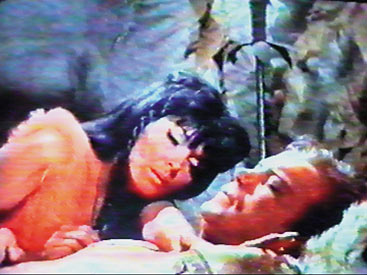
Born in 1966 in Glasgow (GB)
Lives and works in Glasgow (GB) and Cologne (DE)

1995
Video, colour, silent
Durée : 23'
Year of Purchase: 1995
In his works and performances, Douglas Gordon manipulates different communication media such as the telephone, the letter, and video, etc., which help him to penetrate the private space of the interlocutor so as to act within his ‘psychological space’. In 1993, with 24 hours Psycho, he introduced works in which he appropriated anthology pieces from film (Hitchcock’s Psycho, John Ford’s The Searchers_), TV series (_Star Trek) and documentaries which he projected on a video screen. He chose genre stereotypes, at once familiar and popular, and gave them a new twist by manipulating the reading of the image (breaks and caesuras, enlargement, appositions and appendages, loop processing, slow motion…) and its inclusion the public place.
By relying on the familiarity of the cult sequences which he extracts from their context, he shifts the viewer’s attention from the action to the inner structure of the images, and their capacity to construct cultural and moral behavioural patterns. At once fascinating and commonplace, the rare kissing scenes in the famous American TV series Star Trek seem harmless and inoffensive, but in slow motion, enlarged and silent they take on a scary psychological dimension, in which some alienation on the part of the spectator is revealed, via the seductiveness of the imagery. Captain Kirk, a symbol of the practical-minded American hero, has here become the aggressor and seducer, a lover and husband, and someone capable of giving rise to attraction/repulsion phenomenon, violence and desire, which characterize film’s ‘hallucinatory’ and manipulatory effects.
The cinematographic image is here incorporated within the video culture, that is to say, within a private use that has become a public means. The case of beer on which the video and the video projector are set, just like the tiniest factor in the showing, the intentional use of the possibilities of manipulating the image offered by the video recorder (slow motion, freeze…), highlight the practices of a mass culture.
By merely varying the parameters of space-time inclusion, the artist brings to the fore a doubt about the truthfulness of sensations, and reveals the social conditioning of the desire to see. He deconstructs the length of the moving image, separates it from events so that it, in turn, reveals the way in which memory is affected by subjective contradictions.
Maïté Vissault